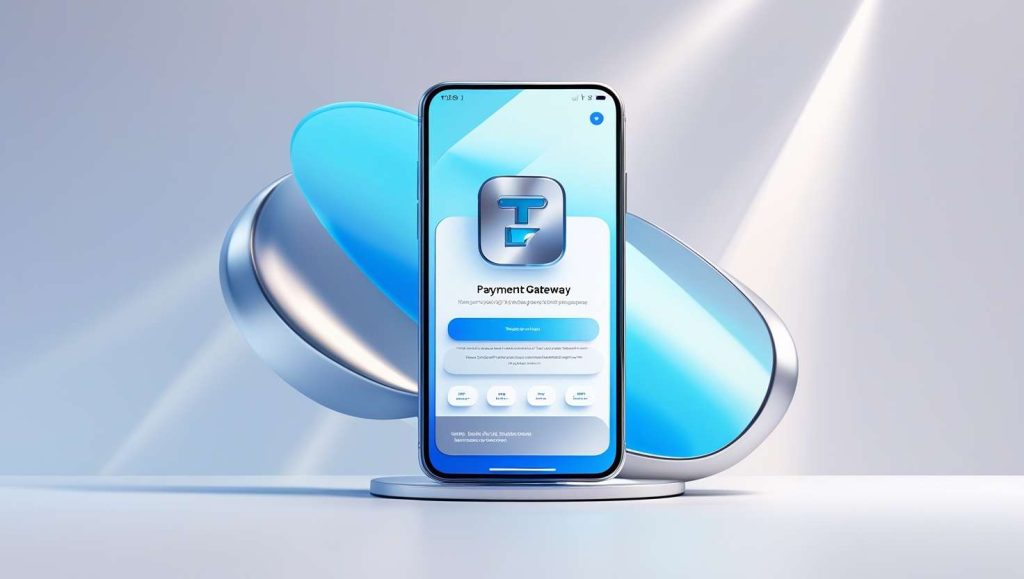As the digital economy continues to change swiftly, incorporating a Tether (USDT) payment gateway into mobile applications has emerged as a key strategy for companies looking to provide reliable and effective transaction solutions. Tether (USDT), recognized as a prominent stablecoin, combines the advantages of cryptocurrency transactions with reduced volatility, positioning it as an excellent option for mobile app payments.
Benefits of Integrating Tether in Mobile Payments
1. The Benefits of Stablecoins for Price Stability
In contrast to the price swings seen in cryptocurrencies such as Bitcoin and Ethereum, Tether (USDT) is linked to the US Dollar at a 1:1 ratio, effectively minimizing price volatility. This consistency is particularly advantageous for mobile apps that manage microtransactions or regular billing, as it protects users from unexpected fluctuations in currency value. Additionally, companies can more accurately project their revenue streams.
2.Reduced Transaction Costs on Various Networks
Transactions using Tether on the TRON (TRC-20) and Binance Smart Chain (BEP-20) networks typically incur minimal gas fees, making them particularly suitable for mobile applications that handle a large number of payments. In contrast to conventional payment processors such as Visa or PayPal, which impose fees ranging from 2% to 5% per transaction, Tether offers a significant reduction in payment expenses.
3. Worldwide Accessibility and Quickness
Tether enables immediate transactions across borders without the necessity for currency exchange or the participation of international banks. For mobile applications catering to users around the globe, this results in effortless international payments, freedom from banking limitations, and enhanced user satisfaction.
Unlike traditional transfer methods like SWIFT or ACH that can take between one to five business days, a USDT transaction on the TRC-20 network typically completes within seconds. This rapid processing is essential for functionalities such as in-app purchases, pay-per-use services, tipping, and subscription models.
4. Enhanced User Confidence and Safety
Tether utilizes public blockchains, which offer clear and unchangeable records. When paired with compliance measures for KYC/AML at the gateway level, smart contract functionality, and integration with non-custodial wallets, this approach bolsters the reliability of transactions and fosters user confidence. Additionally, it minimizes the threats of chargebacks and fraud that often affect conventional credit card systems.
5. Enhanced Financial Access
In areas where banking systems are not fully developed, USDT enables users of mobile applications to conduct transactions safely without needing a traditional bank account. This feature is particularly advantageous for individuals in developing countries or regions with limited banking services, as they depend on cryptocurrency wallets and mobile-centric platforms for their financial transactions.
6.Automation and Programmability
By integrating USDT into smart contracts, developers have the ability to design automated payment processes for various purposes such as subscriptions, rewards, loyalty programs, escrow functions, and decentralized applications (DAOs). This capability can pave the way for innovative business models within the mobile landscape.
Top Tether Payment Gateway Providers for Mobile Apps
Selecting the ideal Tether payment gateway for your mobile application involves considering multiple aspects: compatibility with networks, integration simplicity (via SDK or API), transaction costs, and readiness for compliance. Let’s take a detailed look at the leading providers:
1. NOWPayments
NOWPayments operates as a non-custodial cryptocurrency payment gateway that facilitates transactions in USDT across various networks such as ERC-20, TRC-20, BSC, and Polygon (MATIC).
– Advantages: User-friendly SDK for implementation, REST API capabilities, automatic coin conversion features, Webhook notifications, ability to generate crypto invoices, and optional fiat settlement.
– Integration Options: Provides specific plugins for mobile-friendly platforms including WooCommerce and OpenCart.
– Applications: Suitable for in-app purchases, SaaS platforms, mobile eCommerce, and digital content distribution.
2. CoinGate
CoinGate is a regulated cryptocurrency payment service provider based in the EU that accepts USDT along with over 70 other cryptocurrencies. It features a comprehensive developer API and provides Point-of-Sale (POS) solutions as well as billing functionalities.
– Advantages: A straightforward 1% flat transaction fee, fiat payouts available in EUR/USD, mass payout capabilities, and automated settlement processes.
– Mobile Compatibility: Perfect for app developers seeking extensive backend API access with the assurance of regulatory compliance.
3. B2BinPay
B2BinPay is a powerful, enterprise-level platform designed for secure transactions in USDT, featuring cutting-edge capabilities such as real-time exchange rate updates, support for multiple wallets, and automated settlement processes.
– Advantages: Customizable API, compatibility with various blockchain networks, fraud detection systems, and a scalable infrastructure.
– Best suited for: Fintech applications, digital wallets, cryptocurrency exchanges, and extensive SaaS solutions.
4. Cryptomus
Cryptomus provides a streamlined, developer-centric payment gateway for USDT transactions. It includes essential features like automatic currency conversion, support for various currencies, and a user-friendly dashboard to oversee mobile payments.
– Advantages: Quick setup, transparency with no hidden charges, support for TRC-20 and BEP-20 tokens, and compatibility with Web3 wallets.
– Best suited for: Emerging startups, apps focused on donations, cryptocurrency gaming platforms, and affiliate marketing initiatives.
5. CoinRemitter
CoinRemitter supports USDT with low transaction fees, decentralized wallet generation, and simple plugins for mobile-friendly CMS platforms like WordPress and Laravel.
- Strengths: Built-in wallet API, quick API setup, minimal KYC.
- Best for: MVPs, lean crypto-enabled mobile services, and fast-launch app projects.
Comparison Table (Updated & Expanded)
| Provider | Supported Networks | Key Features | Integration Style | Best Use Cases |
| NOWPayments | ERC-20, TRC-20, BSC, MATIC | Auto conversion, invoices, non-custodial, Webhooks | Plugin + API | eCommerce, mobile SaaS, content apps |
| CoinGate | Multiple | Licensed, fiat payout, mass payouts, flexible billing | API + POS | Regulated apps, marketplaces, subscriptions |
| B2BinPay | Multiple | Enterprise-grade, real-time exchange, fraud controls | Custom API | Fintech, large mobile platforms |
| Cryptomus | TRC-20, BEP-20, ERC-20 | Auto converters, detailed dashboards, low fees | Dashboard + API | Startups, Web3, mobile wallets |
| CoinRemitter | Multiple | Built-in wallet API, minimal KYC, simple UI | API + Plugins | Lightweight crypto apps, MVPs |
Technical Considerations
• Complexity of Integration: The level of difficulty in integration can vary significantly based on the service provider, from straightforward plugin setups to more intricate API arrangements.
• Choice of Network: The selection of a specific blockchain network (such as ERC-20 or TRC-20) has an impact on both transaction speed and associated costs.
• Compliance with Regulations: It is crucial to comply with relevant local laws and regulations related to cryptocurrency transactions.
Future Outlook
With the rise in cryptocurrency usage, the incorporation of Tether payment systems into mobile apps is set to become commonplace. Companies that embrace this change early on will secure a competitive edge in the changing landscape of the digital economy.
Conclusion
Integrating a Tether (USDT) payment gateway into your mobile application isn’t just a trend — it’s a strategic move toward scalability, user trust, and global accessibility. With benefits such as low transaction fees, fast settlement times, and price stability, USDT offers an ideal bridge between traditional finance and modern digital ecosystems.
Whether you’re building an e-commerce platform, a mobile wallet, or a DeFi-powered app, Tether simplifies cross-border payments and eliminates the volatility often associated with cryptocurrencies. And if you’re looking for a turnkey solution, platforms like Pipcore offer powerful backend infrastructure and APIs to help you deploy secure and compliant USDT payment systems seamlessly.
Choosing the right gateway is critical — and with the right technology partner, your mobile app can deliver a payment experience that’s fast, reliable, and ready for Web3.
Frequently Asked Questions (FAQ)
Q1: What is a Tether payment gateway?
A Tether payment gateway allows businesses to accept USDT as payment for goods or services, facilitating crypto transactions within applications or websites.
Q2: How does Tether ensure price stability?
Tether is pegged to the US Dollar on a 1:1 ratio, aiming to maintain consistent value and minimize volatility.
Q3: Which blockchain networks support Tether?
Tether operates on multiple blockchains, including Ethereum (ERC-20), TRON (TRC-20), Binance Smart Chain (BSC), and Polygon (MATIC).
Q4: Is it legal to accept Tether payments?
Legality varies by jurisdiction. Businesses should consult local regulations to ensure compliance when accepting cryptocurrency payments.







